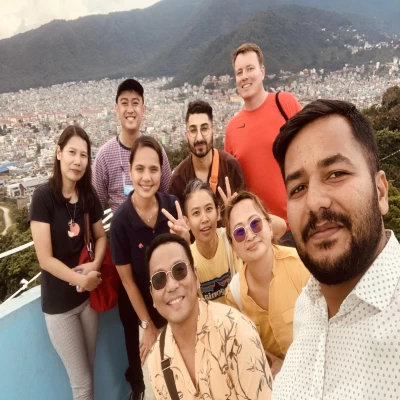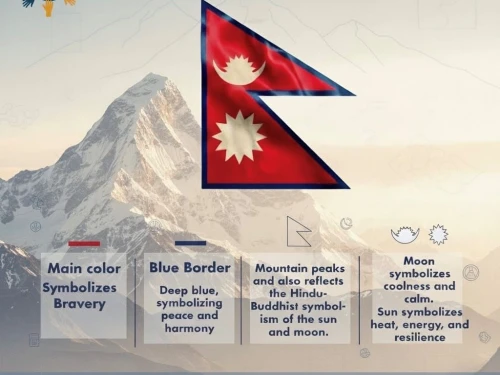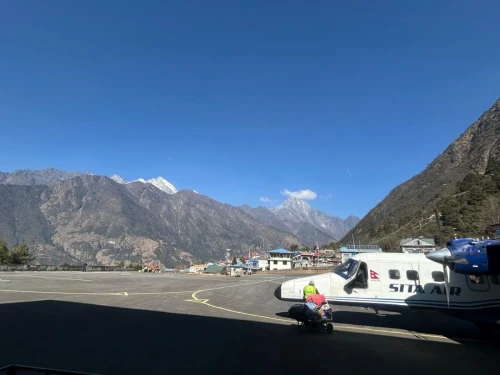The Sky Burial Ritual in Mustang lies in north-western Nepal, it is a sacred and rare funeral practice rooted in the ancient traditions of Tibetan Buddhism and Bon religion. It is also called the “Last Forbidden Kingdom”. The region offers a perfect glimpse into ancient Tibetan traditions.
This tradition includes offering the deceased human’s body to vultures and other scavengers, symbolizing the impermanence of life and the interconnectedness of all beings. This tradition is followed by the Tibetan culture, followed by people living in the Himalayan region of Nepal, including the Humla, Jumla, Dolpa, mustang, and Manang districts.
Death is the universal truth for everyone. However, the death ritual differs according to one’s society and values. There are many distinct types of death rituals, and the ancient Tibetan funeral known as sky burial is one of innumerable.
The sky burial ritual is unique because it follows an unfamiliar but specific process. The ritual begins with a Lama praying and performing sacred rites to ensure the deceased soul transitions peacefully to the next life. The body is then taken to a specific site designed for sky burials, often on a high hill. Specially trained individuals called “body-breakers” dismember the body to make it accessible to vultures. In this context, these birds, revered as divine creatures consume the remains, symbolizing the soul’s release from its earthly bonds.
Nonetheless, funeral rituals, whether followed or developed, can provide solace for the family during their time of loss, providing a chance for them to find meaning and healing in their grief. This tradition changes with time changing, however, is getting rare these days.
What is the Sky Burial Ritual in Nepal?
Hindus traditionally cremate their dead bodies in a sacred ritual, often performed on the banks of large rivers, with the Pashupatinath Temple in Kathmandu being a prominent site for these ceremonies. This ritual symbolizes the purification of the soul and its release from the physical body, aiding its journey towards reincarnation. Similarly, many Buddhist schools also practice cremation, accompanied by prayers to guide the soul toward enlightenment or rebirth.

However, Tibetan Buddhists stand out for their unique tradition of sky burials, where the deceased body is offered to vultures in a sacred ritual.
Sky burial is a traditional funeral practice of the Lo Manthang community in Tibet also called Jhator and has long been a part of the culture or beliefs of the Lo Manthang people. This culture includes the shared deceased body being fed to vultures. This is the distinctive way of honoring the dead and releasing the soul for its journey to the Posthumous.
History of the Sky Burial Ritual in Mustang-Nepal
The sky burial ritual in Mustang, Nepal is fascinating and dates back as far as 2500 years ago. Sky burial traces its origins to ancient Tibetan Buddhist traditions deeply rooted in the belief in impermanence and compassion. This practice likely arrived in Mustang through cultural exchanges with neighboring Tibetan regions, as mustang through cultural exchanges. Known as “Jhator”, meaning “giving alms to the birds”, the ritual reflects the Buddhist philosophy that the body, once devoid of life, should serve a higher purpose by sustaining other beings.
Historically, in Mustang-Nepal, sky burial rituals are practiced mainly by the people following the Buddhist Bon religion, which normally dates back to 2500 years ago. The beliefs and customs of the ancient Bon religion and Tibetan Buddhism, which still hold in Mustang-Nepal, revolve around the theory of rebirth and the cyclical nature of life and death.
In Mustang, the sky burial ritual holds profound spiritual symbolism, embodied by the three sacred stones placed atop the mountain. These stones represent the eternal cycle of birth, death, and the reemergence of life, a cornerstone of Buddhist philosophy. The ritual reflects the belief that life and death are interconnected, with death serving as a gateway to the next phase of existence. By offering the body to vultures, practitioners aim to dissolve physical attachments, embracing the impermanence of life.

Challenges and Controversies Surrounding the Sky Burial Ritual in Nepal
The ritual of sky burial in Nepal faces many challenges and controversies as traditional practices clash with modern realities. One significant challenge is the decline in vulture numbers, largely due to habitat loss and diclofenac, a bird-killing pesticide used for livestock. This ritual can benefit small communities in mountain regions lacking wood and often cannot afford traditional burials. This decline interferes with the ecological balance of the ritual, limiting the availability of vultures to consume the body, which is central to the practice. Furthermore, modern influences and the spread of cremation practices have led to a gradual decline in the practice of ritual, as many communities adopted new ways to honor their dead.
Unfortunately, the practice of sky burial has become quite controversial these days. First, it has been reported that the high-altitude locations where Sky Burials take place, are popular with many people looking to avoid high funeral costs. Appreciative organizations like UNESCO and the Government of Nepal have worked hard to ensure that the sky burial practice is respectful and meaningful while taking into account admirable and environmental concerns.
Controversies surrounding the ritual often stem from social and cultural misunderstandings. Additionally, concerns about sanitation and public health in sky burial areas have fueled debates especially, as tourism and modern infrastructure expand into remote areas like Mustang. Balancing the preservation of this sacred tradition with ecological conservation, modernization, and cultural respect has become a complex challenge for practitioners and officials.
Sky Burial Ritual in Other Parts of The World
Sky Burials have been solitary practices for centuries in various parts of the world. However, the sky ritual practice has been deeply intertwined with Tibetan culture and beliefs. In the Tibetan community, the sky burial practice is one of the most important cultural and profound rituals.
Beyond Tibet, variations of sky burial exist in other parts of the world. In the Zoroastrian tradition of ancient Persia and some Parsi communities in India, dead bodies were left in " silent towers & quot; to be purified by vultures and the sun. The Zoroastrian theory of this ritual does not involve the burial or cremation of the deceased, but rather the sacred elements of earth, fire, and water. Similarly, some indigenous cultures in North America practice open burial by placing the bodies on elevated wooden platforms or in trees, ensuring a return to nature.

Sky burials have been practiced in Tibet and Mongolia for centuries. They are primarily seen today in Tibet, Qinghai, Bhutan, Mongolia, parts of Nepal, and even some other Southeast Asian countries.
Other Buddhist Burial Customs in Nepal
In Nepal, Buddhist cultural customs reflect the many traditions of its multi-ethnic society, often leveraged by Tibetan, Newar, and other Buddhist practices, which account for nearly 9.04% of the population. In Kathmandu Valley, especially among the Newar Buddhists, cremation is the most common burial. In addition, the body is typically washed, dressed in simple clothes, and placed on a funeral pyre. Furthermore, during this procession, community members escort the body to its funeral site shouting chants, beating drums, and blowing horns. After that, family members perform rites and prayers, invoking blessings for the deceased's peaceful transition into the afterlife. In mountain areas, Tibetan Buddhists in Nepal, burial can take a diverse form, with certain communities practicing sky burial or ritual segmentation.
In Conclusion
The sky burial ritual, practiced in Mustang and Dolpa is the most popular place for this culture in Nepal. It reflects the deep-rooted Buddhist philosophy of impermanence and the interconnectedness of life and death. For trekkers exploring these regions, the ritual offers a unique opportunity to witness a sacred tradition that is rarely found elsewhere, fostering a deeper understanding of local customs and spirituality.
Trekking trails in Mustang and Dolpa not only lead to breathtaking natural landscapes but also provide access to remote villages where these ancient rituals are preserved.


.webp)
 1 review
1 review





